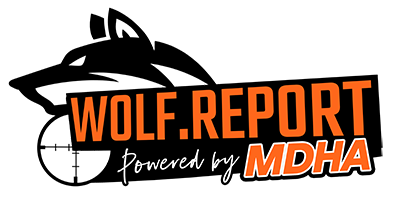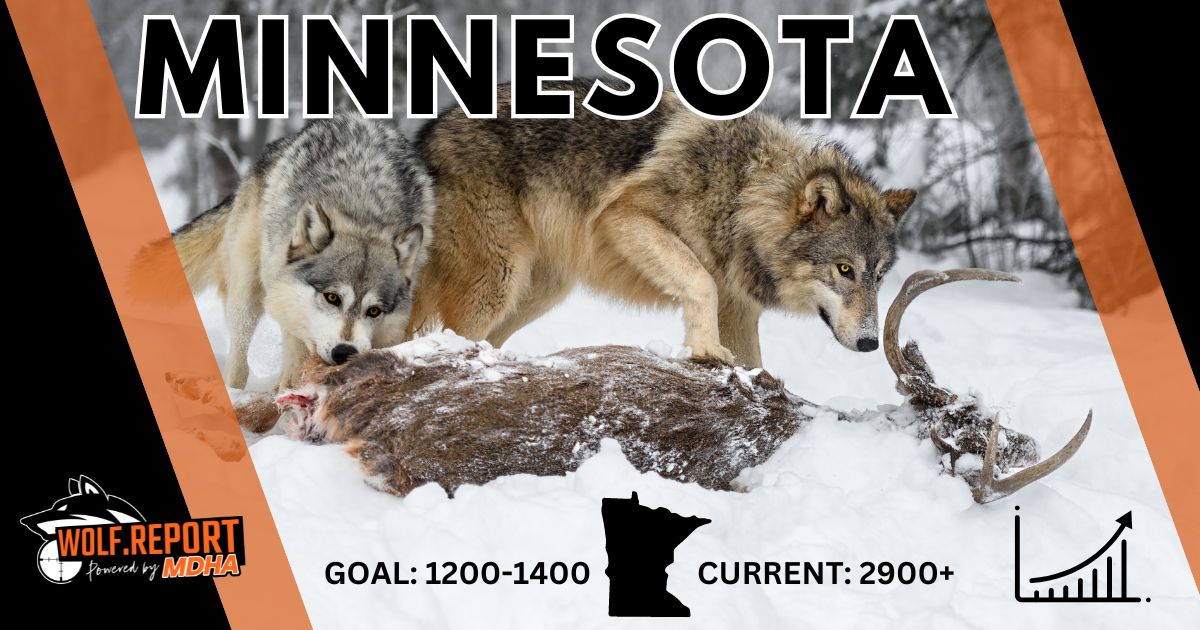

Minnesota's wolf recovery has been a remarkable success story. In the 1980s, our state set an ambitious goal to restore the wolf population to between 1,200 and 1,400. Today, we boast over 3,000 wolves roaming our forests and farmlands. While this is a testament to successful conservation efforts, it also presents new challenges that require thoughtful management.
Reaching the wolf population goal decades ago was a significant milestone. However, as the population continues to grow, so do interactions between wolves and humans. At Wolf Report, we regularly receive reports from concerned citizens about these encounters and the negative impact wolves are having on deer populations and deer hunting across the state.
The growing wolf population underscores the need for a dynamic, state-controlled management plan. It's time to allow states to manage their wolf populations in ways that best suit their unique ecosystems and communities. Organizations like the Minnesota Deer Hunters Association (MDHA) and The Sportsmen’s Alliance have been advocating for this approach for decades, emphasizing that state wildlife agencies like the Minnesota Department of Natural Resources (DNR) are best equipped to make informed decisions.
The push for state-controlled wolf management isn't just about preserving hunting opportunities; it's also about respecting local expertise and scientific data. Throughout the mid-2000s, Minnesota had a wolf management season that allowed for controlled hunting. However, this was overturned by an out-of-state judge, highlighting the disconnect between federal oversight and local realities. Imagine a judge from Minnesota telling another state to stop fishing for walleyes because we think there should be more, regardless of local opinions. This top-down approach is anti-science and undermines local knowledge.
The DNR's role in wildlife management is based on extensive scientific research and an in-depth understanding of local ecosystems. Allowing special interest groups or distant judges to dictate how we manage our wildlife not only ignores this expertise but also risks disrupting the balance that has been carefully cultivated over the years.
For hunters, conservationists, and outdoor enthusiasts in Minnesota, supporting organizations like MDHA and The Sportsmen’s Alliance is crucial. These groups are fighting to return wolf management to the state level, where it belongs. Their decades-long efforts reflect a deep commitment to responsible wildlife stewardship, ensuring that our natural resources are managed sustainably and effectively.
Minnesota's wolf population has surpassed its original recovery goals, and now, effective management is essential. By advocating for state-controlled wolf management, we can ensure that decisions are made by those who understand our unique landscapes and communities best. Support the organizations working towards this goal and help us maintain the delicate balance between conservation and practical wildlife management.
Learn more about how you can get involved by visiting the Minnesota Deer Hunters Association and The Sportsmen’s Alliance websites. Together, we can advocate for responsible, science-based management of Minnesota's wolf population.
